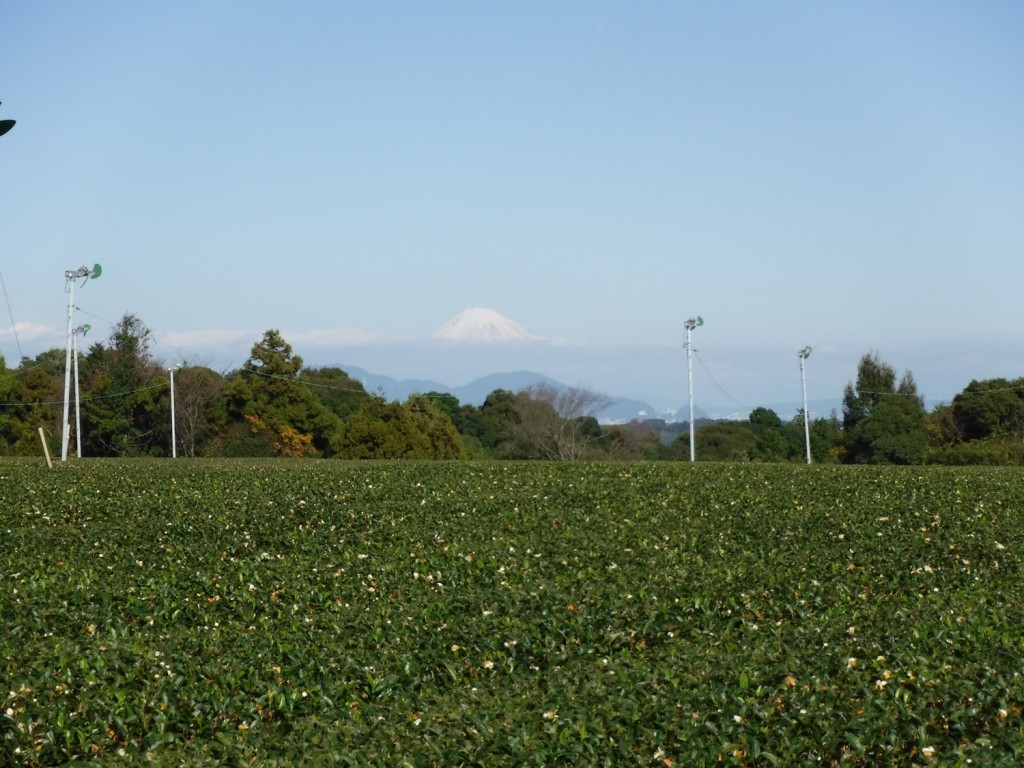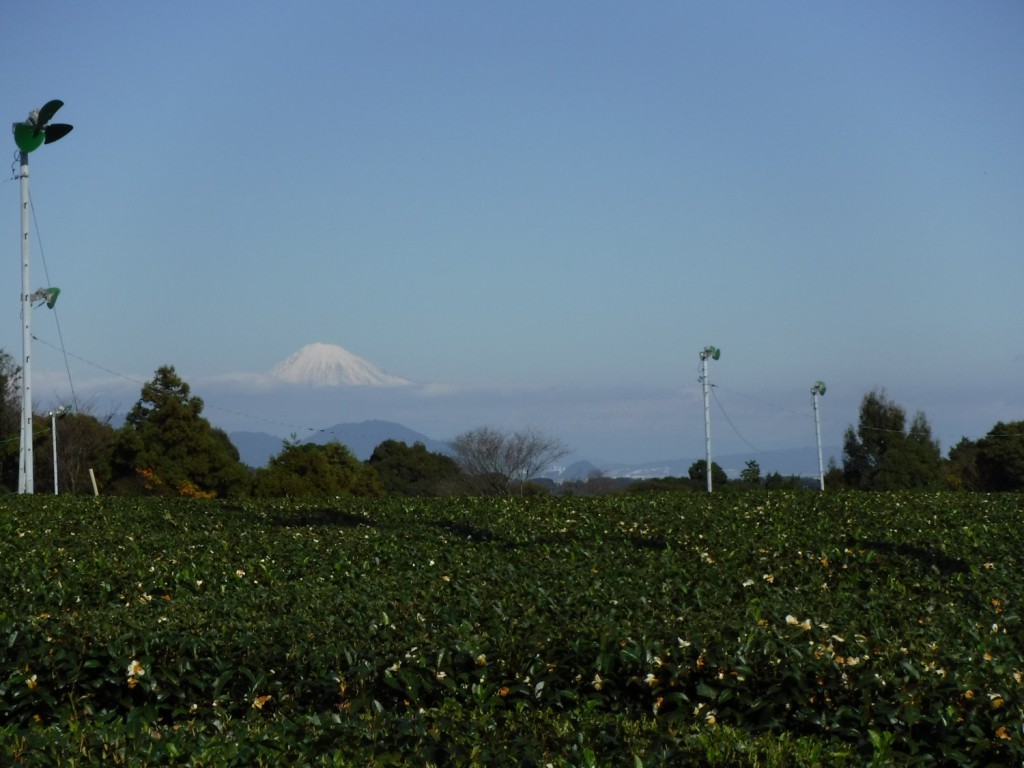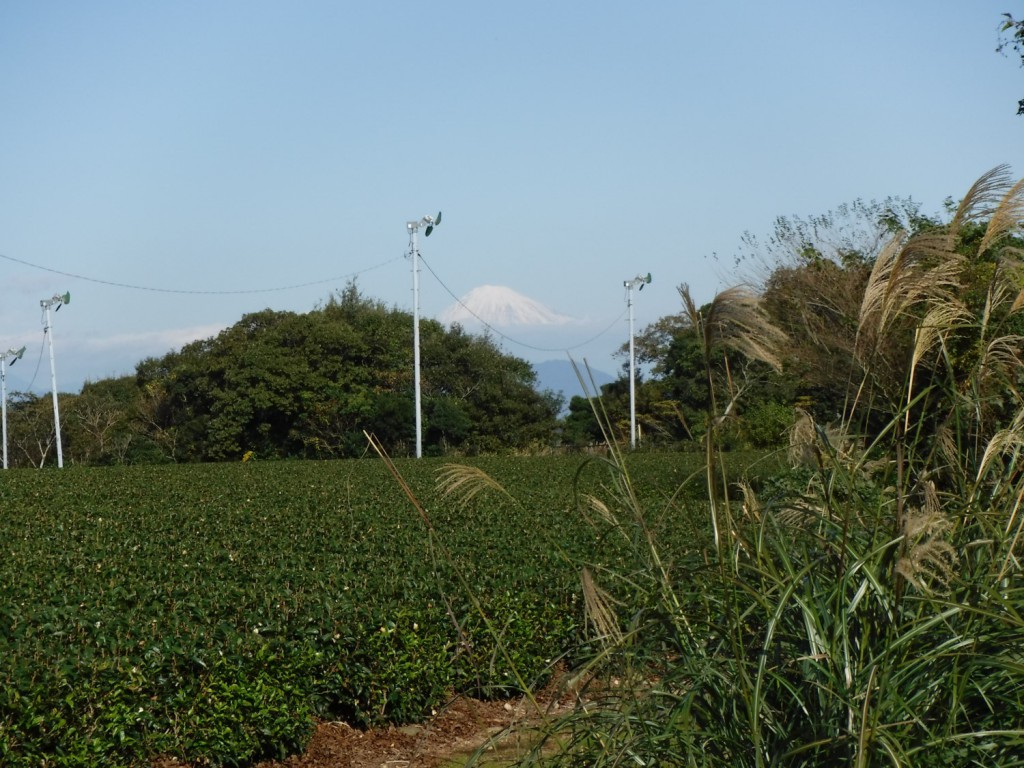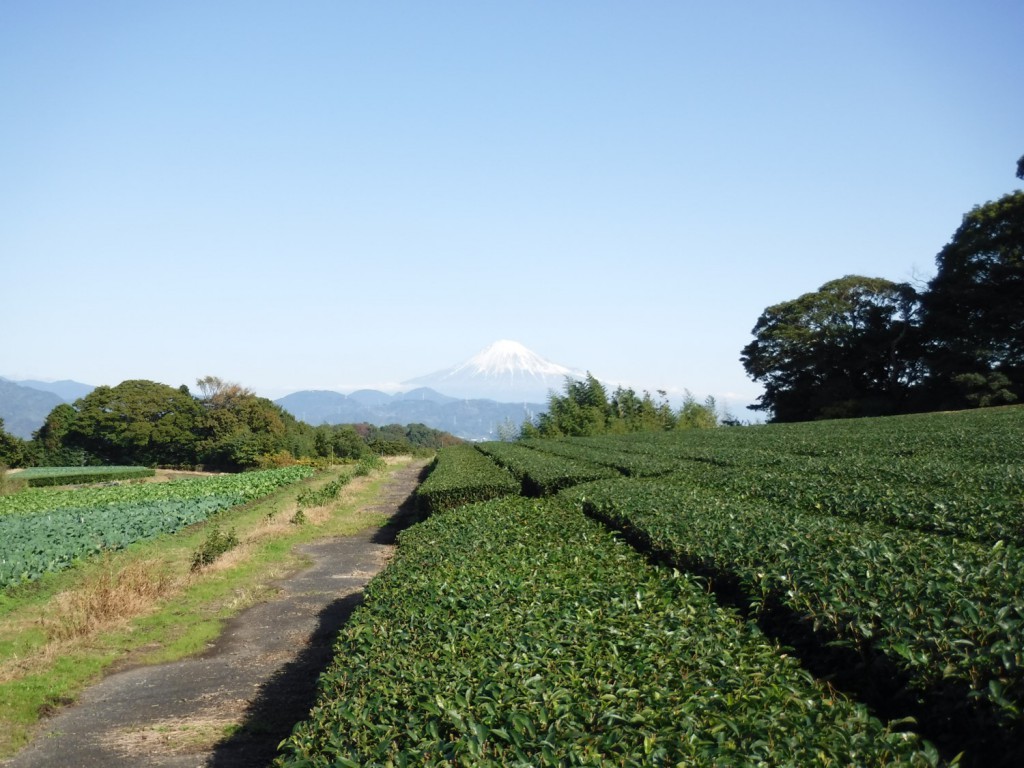A fine autumn day provide us beautiful landscape of Mt. Fuji. From the tea plantation on Makinohara upland, we can look nice view of Mt. Fuji as follows.

Lately a cold air mass moved to the sky of Japan, bringing the snow-capped peak of Mt. Fuji.

Mt. Fuji from Shizutani area on Makinohara upland.
Silver grass, one of the symbol of Japanese autumn, makes us feel that autumn has come.

Mt. Fuji from Shirai area on Makinohara upland. Silver grass on rightside is one of the symbol of Japanese autumn.
From Shizuoka city, we can get a nice view of Mt. Fuji and tea plantation.

Till autumn end, tea plants take up nutrients from soil, photosynthesize and partition photosynthates to sink organs, for example, sugar is allocated to the roots and synthesized to starch as stored sugar. Nutrients uptake, especially nitrogen, contributes the next first flush of tea and stored sugar in roots is considered to relate to tolerance against frost damage. Thus, tea plantation management in autumn time is the most important for tea farmers to produce finer teas.
In the shade of Mt. Fuji, tea farmers are making great efforts to produce higher quality of teas. I wish the teas in 2017 will also be fine and more prominent!
